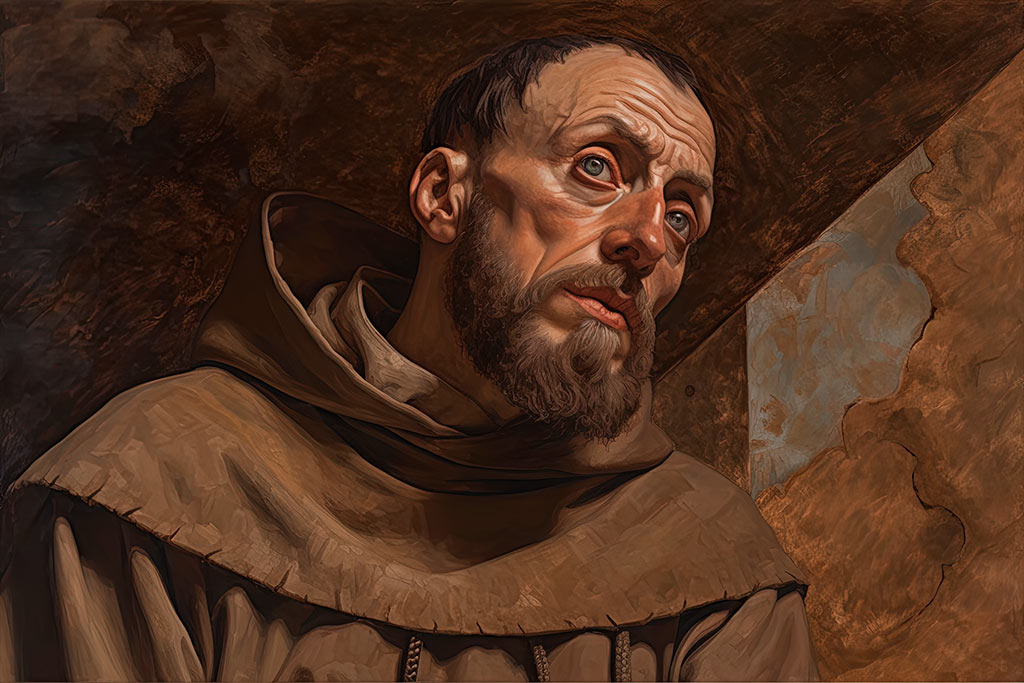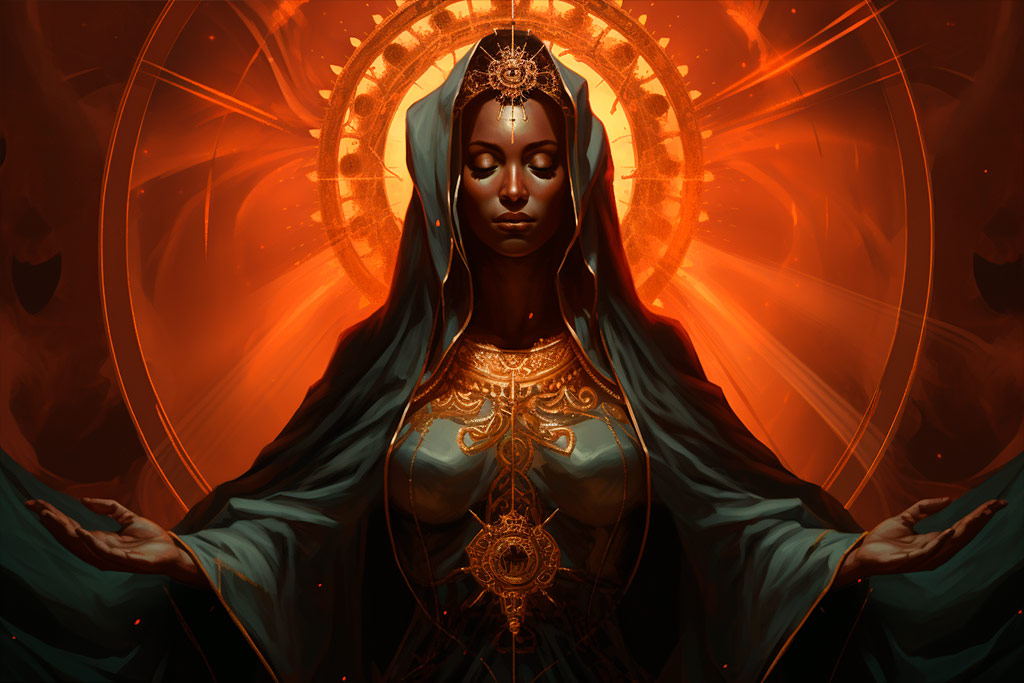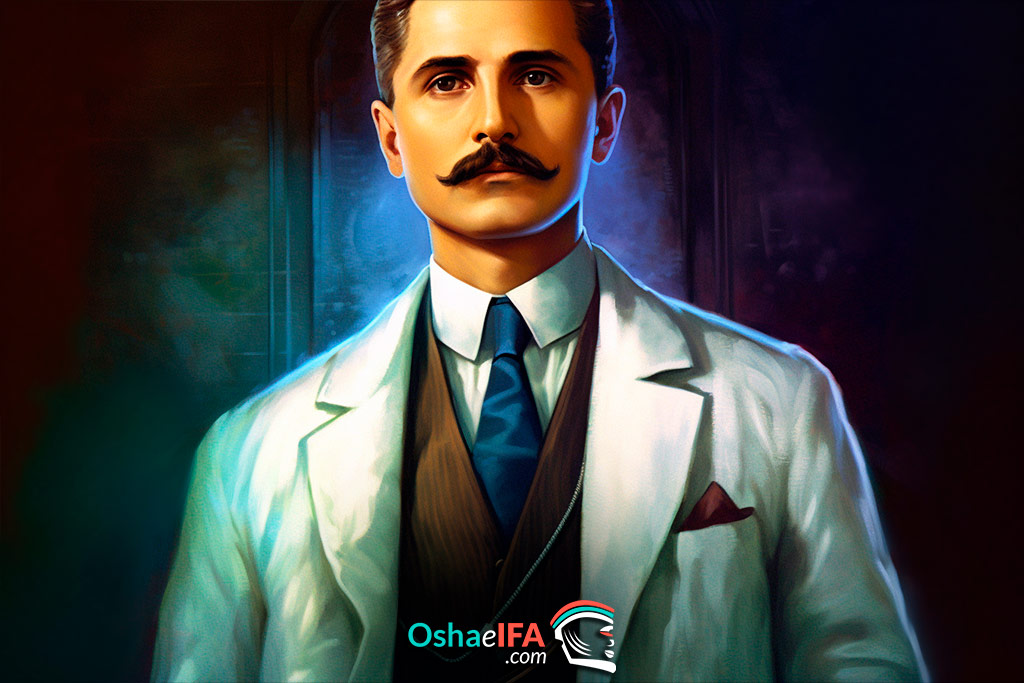Saint Francis of Assisi: The man who found God in all things

Saint Francis of Assisi is considered one of the greatest saints in the Christian tradition and an example of a life lived in imitation of Jesus Christ. During his transit through this land he gave up a life of wealth and social position to embrace a life of poverty and chastity. He even went so far as to found, with the approval of the Pope, a new monastic order, commonly known as the Franciscans. He is known as the patron saint of animals, the environment and one of the two patron saints of Italy (along with Catherine of Siena).
Who is Saint Francis of Assisi?
Born under the name Giovanni Francesco di Bernardone, in 1181. In Umbria, a region located in central Italy. He is the son of Pietro di Bernardone, a wealthy cloth merchant. As a young man, he was bright, popular, and athletic, though he occasionally showed signs of what he would later define as a love of charity and disdain for the world.
Story of Saint Francis of Assisi: From a young nobleman to a follower of Christ
In 1201, at the age of 19, he joined a military expedition against Perugia. The campaign was disastrous, he was wounded on the battlefield and taken prisoner for a year. During this period of imprisonment, a change took place within Francisco. He renounced life's material pleasures and rewards and began to dedicate his life to Jesus Christ and the essential teachings of the Gospels.
When ill health caused his release, but a deep call resounded within him. Several stories suggest that Saint Francis began to display behaviors that to his contemporaries might seem erratic, in fact, he was branded crazy or foolish for giving away his father's wealth, giving away his own clothes, visiting various churches, and caring for the outcasts, such as the lepers.

But, all this led him to experience during this period a mystical vision in a church in ruins. The image of the Crucified Christ told him: «Francis, go and repair my house, which, as you can see, is in ruins».
This vision gave Francis a clear mission in life and he devoted himself to a life of poverty, chastity and devotion to Jesus Christ. He spent much of his time in prayer and meditation. Gradually, he began to attract other young men, who admired his spiritual fervor and renunciation.
At first, Francis and his companions were outside the traditional church hierarchy, which caused some consternation among local bishops and powerful people. For this reason, Francis decided to make a pilgrimage to the Vatican in Rome to try to obtain an audience with the Pope.
To everyone's surprise, Francis managed not only to meet with the Pope, but also to obtain approval for a new order based on the principles of poverty and the spirit of the Gospels. The Pope is said to have refused at first, but then had a dream in which he was given to see the spiritual nature of Saint Francis.
With this papal approval, Saint Francis was able to grow his mission and his fellow friars traveled throughout Italy and Europe founding spiritual communities based on the teachings of Saint Francis.
In 1219, accompanied by another friar, Saint Francis went to Egypt hoping to speak to the Sultan of Egypt about Christianity. At the time, a Crusader army was encamped outside the city after a fierce battle the previous year. Christian sources suggest that Saint Francis was received by the Sultan of Egypt in a friendly and peaceful manner. It is not clear what happened, but it was a significant event for a Christian to be received by a Muslim leader during the period of the Crusades. After this period, only the Franciscans of the Catholic Church were allowed to stay in the holy city of Jerusalem as custodians of Christian tradition and important places of worship, such as the Holy Sepulcher of the Lord.
As the order grew in number, it became necessary to institute more formal organizational structure and rules. The order was too large to depend on St. Francis' personal example and simple approach to spirituality.
After the rules were mandated by the Pope, Saint Francis began to withdraw from external affairs, dedicating his time to contemplation and prayer. San Francisco was also a noted writer and poet. He wrote in vulgar Italian (an Umbrian dialect), avoiding Latin as he believed that ordinary people should be able to read anything written.
Later, it was also recorded that Saint Francis received the stigmata, experiencing five wounds from Christ on the cross. It is also said that while he was doing his usual work evangelizing and helping the poor and sick, Francisco contracted conjunctivitis and malaria.
After a time of illness, when his end was nearing, he returned to Asis. By that time, he was already considered a saint awaiting only formal canonization, so knights were sent to protect him and make sure that no one could take his remains after his death. At that time, the body of a saint was considered an extremely valuable relic.
When Francis died on October 3, 1226, at the age of 44, a flock of larks is said to have come flying and singing at the moment of his death. That night, while Saint Francis said goodbye to this world, he sang Psalm 142.Voce mea ad Dominum» as his last prayer of faith.
Saint Francis patron saint of animals

Many miracles have been associated with Saint Francis. In particular, it was recorded that Saint Francis seemed to have a close connection with all animals, especially birds. When Saint Francis gave a sermon, it is said that the birds came to listen. Saint Francis said about the birds: «
«My sister birds, you owe a lot to God, and always and everywhere you must praise him; because He has given you freedom to cross the sky and has clothed you... you neither sow nor reap, and God feeds you and gives you rivers and springs to quench your thirst, and mountains and valleys for shelter, and tall trees for your nests».
Saint Francis was known for his love for all of God's creation, often saying to himself expressions such as: "brother Sun and sister Moon." He recognized everything as a part of God's creation. A story about Saint Francis relates how he managed to tame a wild wolf in exchange for the villagers promising to feed the hungry wolf.
Around 1220, Francis established one of the first known mangers in Greccio, near Assisi. He used live animals around Jesus' manger; Saint Francis hoped that people would get a much more vivid impression of the humble nature of Jesus' birth. The manger became an important aspect of the Christian religion at Christmas.
You can read: Prayer to Saint Francis of Assisi
The Order of the Franciscans

The Franciscan Order is an order of the Catholic Church. Its members are often called Franciscan Friars. It was founded by Saint Francis of Assisi in 1209. The Franciscans were known for their extreme humility, they were prohibited from owning property and were required as a basic requirement to live a life of poverty, traveling and begging for food while preaching in emulation of Jesus Christ. However, later on those rules would be relaxed a bit.
The most relevant of this religious organization is that the members of the Franciscan Order followed the teachings of Francis, who was later officially declared a saint of the Catholic Church.
In general, Franciscan religious customs emphasize that the natural world is a happy and good place. They give less importance to the concept of a world and a humanity stained by original sin. Francis of Assisi celebrated the natural world as a representation of God's creation.
Viewing Jesus' sacrifice as the ultimate act of humility, Franciscans also emphasize living a simple life, detached from material possessions. Solidarity with the poor and the promotion of social justice are important aspects of Franciscan practice, and the order also stresses the importance of loyalty to the Church.
The Franciscan Friars, along with the Dominicans, were commissioned as Inquisitors during the Inquisition. In 1252, they were allowed to use torture, and the order published a guide to identifying heretics and witches.

Franciscans are also known to witness many cases of stigmata, or the appearance of wounds that mimic those of Jesus Christ on the cross. Francisco de Asís claimed to have stigmata. They also manifest many visions of Jesus and the Virgin Mary. They are credited with developing the idea of the Stations of the Cross.
Franciscan Friars established Bible study centers in Jerusalem and Hong Kong. The Hong Kong Institute published the first complete Chinese translation of the Bible in 1968, and it is still considered the most authoritative version of the Bible among Chinese Catholics today.
There are three main branches of the Franciscan Order, known as the First, Second, and Third Order of Franciscans, and they continue to be known for their adherence to an austere lifestyle and focus on preaching and service to the poor. Its most essential features are:
- The First Order of Franciscans
The First Order of Franciscans is called the Order of Friars Minor or the Franciscans. It is an exclusively male order, some of which trace their origins back to Saint Francis of Assisi.
They follow the Rule of Saint Francis which includes vows of chastity, poverty and obedience. The rules date back to the establishment of the order in 1209 with the approval of Pope Innocent III for Saint Francis of Assisi to establish his order under these parameters. Its canons were further defined and ended up being officially published in 1223. The order still follows these rules.
The First Order eventually split into three distinct branches: The original Friars Minor, the Conventual Friars Minor, founded in 1517, and the Capuchin Friars Minor, founded in 1619. These three branches follow the Rule of Saint Francis, but are considered separate orders. with separate governing bodies.
- The Second Order of Franciscans
The Second Order of Franciscans is often called the Poor Sisters, the Poor Clares, or the Capuchin nuns. This order is made up exclusively of women and consists of nuns who live their lives locked up in monasteries. They were founded by San Francisco de Asís and Santa Clara de Asís, who was his follower, on Palm Sunday in 1212.
They live under the Rule of Santa Clara, which, like the Rule of Saint Francis, requires nuns to live in poverty and own no property, instead living on alms given by local populations. Many monasteries following the order were established throughout Europe and in the Spanish Latin American colonies.
- The Third Order of Franciscans
This is divided into two branches: The first branch is known as "the regular branch". Although they do not receive the same degree of training and extreme vows as the First and Second Orders, their members live in seclusion in religious institutes such as monasteries. Significantly, unlike members of the First and Second Order, they can marry.
The third order was created by Francis in 1221 in part because there were many married men and women who wanted to adopt the Franciscan way of life.
However, regular members of the Third Order take vows more seriously than members of the Secular Third Order. This secular branch has both male and female members who live lives of faith and devotion, yet remain in the world, not withdrawing into extreme poverty or isolation from the first and second orders in monasteries. Instead, they live in normal society. This does not prevent them from trying to live lives of austerity and undergo training and preparation.
Canonization of Saint Francis of Assisi

Saint Francis is often considered an inspiring example of someone who most closely imitated the life of Christ in word, deed, and spirit. He had a deep love for Christ and willingly embraced poverty, chastity, and a simple life of humility.
Just two years after his death, on July 16, 1228 in Assisi, Francis is proclaimed a saint by Pope Gregory IX. The records of the time relate that the Pontiff, trying to be as objective as possible, commissioned the evaluation of the life and miracles of Francis to the cardinals who might seem least in favor of him.
The biographer of San Francisco, Tomás de Celano, relates in this regard that: «Bishops, abbots and prelates flock and meet, coming from the most distant regions of the earth; a king and a large crowd of earls and magnates are also present. (...) Dominating the center is the Supreme Pontiff with a crown on his head as a sign of glory and holiness. The crowd participates, in silence, in the event. Then the Pope, with his hands raised to heaven, shouts the words of canonization in a thunderous voice, and then, together with the cardinals, intones the Te Deum.
It is said that at the time of his canonization, a large number of people celebrated and praised God because Francis had been elevated with such an honor.
Right after that solemn act, Pope Gregory IX ordered that, for the greater glory of the newly named saint, a basilica dedicated in his name would be built in Assisi where his mortal remains would be protected and rest.
Later, in 1230, the Pontiff effectively ordered that the Saint's body be transferred from the church of San Giorgio to the new basilica. This scene has been recreated through a very famous work painted by Giotto entitled "Canonization of Francis by Gregory IX", and you can see a large number of people kneeling, as well as a huge wooden pavilion that covers the Pope.
You can read: Prayer to Santa Clara
Saint Francis and Saint Clare of Assisi

Clara was several years younger than Francisco, but that did not prevent her from becoming an inspiration, even becoming his close spiritual confidante.
Both developed an unwavering faith, with a deep spirituality. Clara found in Francisco's teachings and lifestyle the appropriate path for her life. She so she met him on several occasions until finally, in the middle of the night after Palm Sunday, she left her parents' house and gave up her life just as Francisco did, and the brothers did. her.
This commitment to God entailed a poor and simple lifestyle. At some point, her uncles even tried to get her out of the convent where Francisco had placed her, but Clara did not doubt her decision. Nor did she falter when other noblewomen, including her younger sister, joined her.
Clare, like Francis, cared for her followers, teaching them by word and example, writing for them a simple rule of life, and fighting the bishop and pope for the privilege of living the life to which they felt they had been called. .
The followers of Francis and Clare can be found today in all walks of life and on all continents, still inspired, seeking a simple lifestyle in the direction of God, with a particular vision that identifies them especially with the poor, caring for creation as a sacred trust, and embracing each person in a brotherly relationship.
It may interest you:


